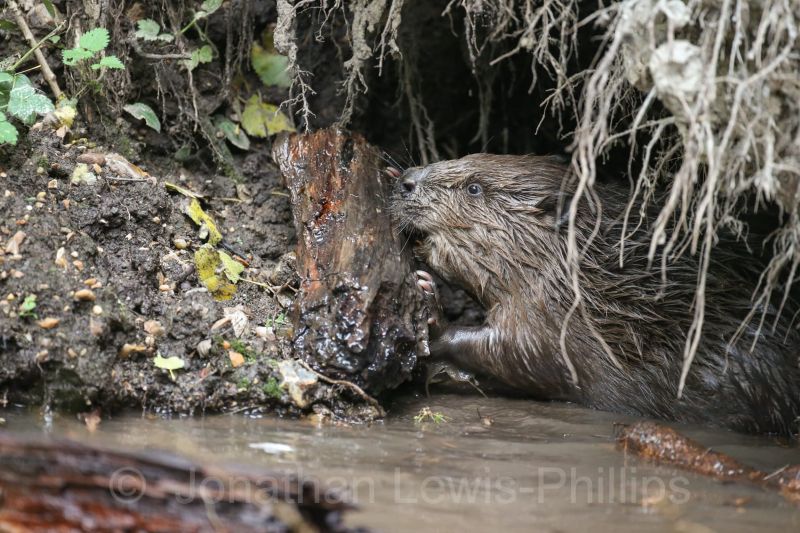_WW1357795.jpg)
The River Glaven in North Norfolk is one of the world's precious chalk streams, with only around 220 in existence. These rare habitats support species such as water voles, white-clawed crayfish and Norfolk hawker dragonflies.
However, despite its ecological importance, the Glaven faces serious threats from pollution, climate change and over-abstraction. Furthermore, with nature rapidly declining across the UK, habitat loss and degradation are major contributors to these challenges.
In September 2021, having completed a thorough feasibility assessment, we released a pair of native Eurasian beavers into a secure enclosure at the headwaters of the River Glaven.
Beavers were once widespread across the UK until the 16th century, when they were hunted to extinction for their fur, meat and ‘castoreum’. Known as ‘ecosystem engineers’, beavers have an unparalleled ability to restore ecological balance. By building dams, beavers provide numerous benefits, including improving water quality through pollution retention (Rosell et al., 2005), mitigating flooding and droughts by storing floodwater and boosting groundwater infiltration, regulating water temperatures (Weber et al., 2017) and creating diverse wetland habitats that support a variety of wildlife.

In just three years, the transformation of the site has been remarkable. The headwaters of this vital chalk stream have become a thriving mosaic of dams, pools and wetlands. This new, complex habitat enhances the resilience of the Glaven and its surrounding landscape. Today, a small population of beavers live in the enclosure, having successfully bred over multiple seasons. The beavers have brought life to the site, attracting a myriad of wildlife, including otters, sparrowhawks, frogs, toads, dragonflies, polecats and tawny owls.
We are closely monitoring the beaver’s impact, collaborating with research institutes such as the University of East Anglia (UEA). For example, a three-year study at the site revealed a 43% reduction in nitrate levels and a 51% reduction in phosphate levels downstream of the beaver wetlands, compared to upstream (Cooper et al., 2025).
The enclosure has also proven to be an invaluable resource for educating the public about beavers – sharing both their capabilities and the challenges they can present. We have welcomed groups of farmers, schoolchildren, community members and partner organisations to share knowledge and experiences.
Associated research outputs:
Cooper, R. J., Cabrales, S., Freeman, E., Holroyd, E., Wyatt, J., & Tosney, J. (2025). Eurasian beaver (Castor Fiber) reintroduction: A nutrient mitigation solution for lowland chalk streams? Wetlands, 45(1), 1-14.
With heartfelt thanks to our crowdfunder contributors, whose vital funding helped launch this project. Additional funding support was provided by the Environment Agency and The Coca-Cola Foundation.
We are deeply grateful to the landowner for allowing us to place the enclosure on their land. We also thank the Beaver Trust for their support in monitoring the health and well-being of the beavers, and our dedicated volunteers who regularly check the fence line.
Cooper, R.J., Cabrales, S., Freeman, E., Holroyd, E., Wyatt, J and Tosney, J. (2025) Eurasian Beaver (Castor Fiber) Reintroduction: A Nutrient Mitigation Solution for Lowland Chalk Streams? Wetlands 45, 10 (2025). https://doi.org/10.1007/s13157-024-01896-3
Rosell, F., Bozsér, O., Collen, P. and Parker, H. (2005) Ecological impact of beavers Castor fiber and Castor canadensis and their ability to modify ecosystems. Mammal Review, 35: 248-276. https://doi.org/10.1111/j.1365-2907.2005.00067.x
Weber, N., Bouwes, N., Pollock, M.M., Volk, C., Wheaton, J.M., Wathen, G., et al. (2017) Alteration of stream temperature by natural and artificial beaver dams. PLoS ONE 12(5): e0176313. https://doi.org/10.1371/journal.pone.0176313
We use Mailchimp as our marketing platform. By clicking subscribe, you acknowledge that your information will be transferred to Mailchimp for processing. Learn more about Mailchimp's privacy practices here.
